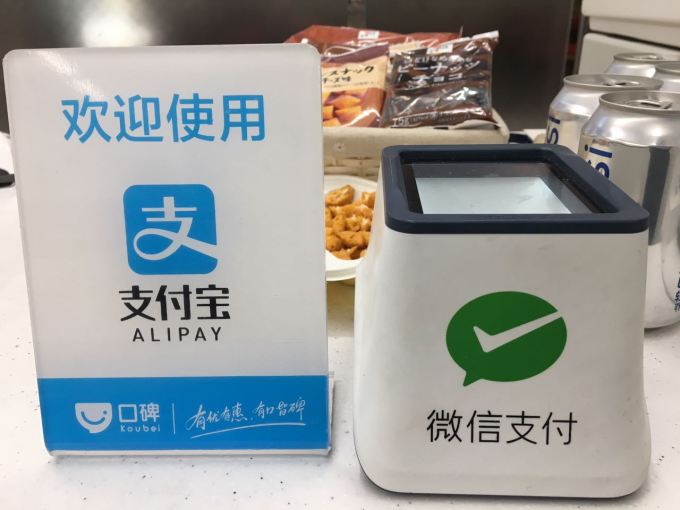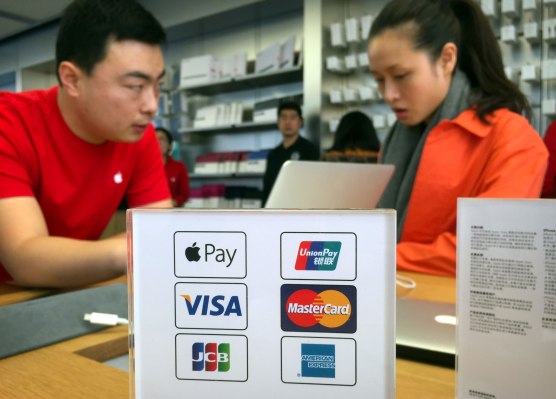Editor’s note: This post originally appeared on TechNode, an editorial partner of TechCrunch based in China.
After a slow start, Apple Pay is now dominating its home country, the United States, but the same can’t be said of China where it is up against a different set of challenges.
Data from Boston Retail Partners shows that Apple Pay is now accepted by 36 percent of merchants in the U.S., thus making it one of the most widely available mobile payment methods in the country. However, to date it has received a lukewarm — or perhaps even cold — reception in China, the planet’s largest market for mobile payments.
When Apple Pay first landed in the Middle Kingdom in May 2016, the smartphone giant was expected to make a serious dent in China’s highly consolidated mobile payment market. Things seemed to get off to a good start. More than 30 million bankcards were added to Apple Pay during the first day of its official launch. However after close to one year of operations in China, Apple Pay has failed to become a genuine threat to the dominance of Alibaba’s Alipay and Tencent-backed Tenpay — which is embedded in dominant chat app WeChat Pay — the two leading payment services.
In Q3 last year, Alipay and Tenpay took 50.42 percent and 38.12 percent, respectively, of China’s mobile payment market, figures from research firm Analysys showed. With the two leading payment services running a monopoly, the rest of the field recorded only single-digit shares of the market. Apple Pay did not even make to the top ten with a portion of the market that is small enough to be overlooked.
So what’s happening here? These are some of the pitfalls standing in the way of Apple Pay in China.
QR codes rule
Technologically speaking, NFC, used by Apple Pay, enjoys many advantages over QR codes with its touch-and-go approach and built-in security. Yet QR code payments have become a widely adopted and deep-rooted practice for Chinese users. Once these habits are formed en masse, they prove difficult to change.
Such is the ubiquity of QR codes that China UnionPay, one of Apple Pay’s Chinese partners and a long-time proponent of NFC, has even succumbed to pressure — the firm launched its own QR code solution late last year. That was a pretty huge surprise given that UnionPay has made a big push into digital through partnerships with smartphone makers Huawei, Xiaomi and of course Apple to push NFC adoption in China.
More broadly, there’s a tech challenge, too. NFC’s reliance on dedicated NFC-equipped smartphones and POS terminals is a road blocks for wider application. Major merchants and retailers are one thing, but the longer tail of smaller retailers haven’t signed up for this equipment which has put a check on how widely supported Apple Pay and other NFC solutions can be.

Open and closed payment platforms
As a third-party payment services, both Alipay and Tenpay are cross-platform services that are open to users on iOS and Android, and any type of phone. That has played out in reaching scale with hundreds of millions of people using the smartphone apps to pay both offline and online. Market leader Alipay claims a whopping 450 million users, with Tenpay coming in a close second.
In comparison, Apple Pay only works with Apple hardware, which means it automatically excludes the majority of the Chinese market who use Android phones. What’s more, Apple Pay only supports the iPhone 6 or newer models. Couple this with slowing sales of the iPhone in the country and it is no surprise the payment option isn’t doing so well.
Extensive offline presence
In just one day of shopping in China, you will come across legions of Alipay and WeChat Pay logos adorning storefronts and cash registers in department stores, boutiques, and even the smaller shops on the street.
On the other hand, Apple Pay has a much less visible offline presence due to its limited support. It is typically only available in larger chain brands like Starbucks, Costa Coffee, Carrefour, and 7-Eleven. Even then, many of these stores will also accept both Alipay and WeChat.
Furthermore, Alipay and Tenpay’s offline presence is fueled by their heavily-subsidized expansion plans. Although it’s clear that subsidization is not sustainable in the long run, this model has proven to be a successful way to attract users in many verticals, including ride-hailing, bike rental, group buying, and other offline-to-online services. Building that initial mass of users ties back into behavioral trends, which can be very tough to overcome for a new kid on the block or a non-dominant service.
